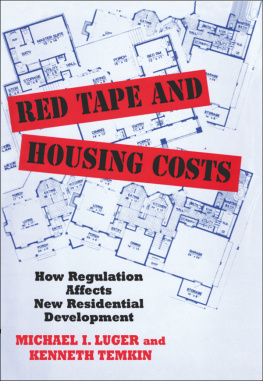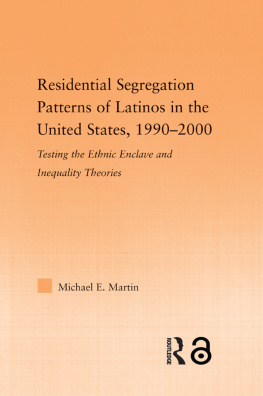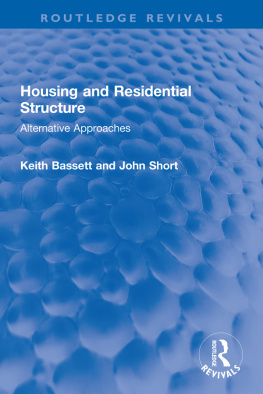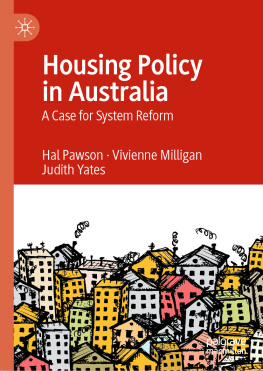Michael Luger - Red Tape and Housing Costs: How Regulation Affects New Residential Development
Here you can read online Michael Luger - Red Tape and Housing Costs: How Regulation Affects New Residential Development full text of the book (entire story) in english for free. Download pdf and epub, get meaning, cover and reviews about this ebook. year: 2018, publisher: Routledge, genre: Politics. Description of the work, (preface) as well as reviews are available. Best literature library LitArk.com created for fans of good reading and offers a wide selection of genres:
Romance novel
Science fiction
Adventure
Detective
Science
History
Home and family
Prose
Art
Politics
Computer
Non-fiction
Religion
Business
Children
Humor
Choose a favorite category and find really read worthwhile books. Enjoy immersion in the world of imagination, feel the emotions of the characters or learn something new for yourself, make an fascinating discovery.
- Book:Red Tape and Housing Costs: How Regulation Affects New Residential Development
- Author:
- Publisher:Routledge
- Genre:
- Year:2018
- Rating:5 / 5
- Favourites:Add to favourites
- Your mark:
- 100
- 1
- 2
- 3
- 4
- 5
Red Tape and Housing Costs: How Regulation Affects New Residential Development: summary, description and annotation
We offer to read an annotation, description, summary or preface (depends on what the author of the book "Red Tape and Housing Costs: How Regulation Affects New Residential Development" wrote himself). If you haven't found the necessary information about the book — write in the comments, we will try to find it.
Michael Luger: author's other books
Who wrote Red Tape and Housing Costs: How Regulation Affects New Residential Development? Find out the surname, the name of the author of the book and a list of all author's works by series.
Red Tape and Housing Costs: How Regulation Affects New Residential Development — read online for free the complete book (whole text) full work
Below is the text of the book, divided by pages. System saving the place of the last page read, allows you to conveniently read the book "Red Tape and Housing Costs: How Regulation Affects New Residential Development" online for free, without having to search again every time where you left off. Put a bookmark, and you can go to the page where you finished reading at any time.
Font size:
Interval:
Bookmark:
Matrix of Costs
A Developers Decision Calculus
General Flow in Approval Process
Development Proposal Review ProcedureTown of Chapel Hill, North Carolina
New Jerseys Regional Regulatory Authorities
Housing Starts in New Jersey, 1960s-1990s
Differences between New Jersey and North Carolina
Regulators Responses: Frequency of Requests for Waivers or Variances
Regulators Responses: lime Allowed for Applicable Ordinances
Reasons for Delay in Acting on Subdivision Applications
Reasons for Delay in Acting on Zoning Relief
Reasons for Delay in Granting Environmental Permits
Number of Approvals and Length of Time Needed for Environmental Permits in New Jersey
Is Complexity a Reason for Delays?
Necessity of Multiple Reviews
Itemized Effects of Subdivision Requirements in New Jersey
Itemized Effects of Zoning Regulations in New Jersey
Itemized Effects of Environmental Regulations in New Jersey
Permit Review Times in New Jersey
New Jersey: Application and Compliance Cost Summary
Home Sales Prices: Mean Values
Cost of Approvals and Improvements
Incidence of Regulatory Costs in New Jersey
Variables Expected to Account for Differences in Authorized New Housing Units
Restrictiveness Scores
Regression Results
- [t]he cost of housing is being driven up by an increasingly expensive and time-consuming permit-approval process, by exclusionary zoning, and by well-intentioned laws aimed at protecting the environment and other features of modern-day life. (U.S. Department of Housing and Urban Development 1991)
Font size:
Interval:
Bookmark:
Similar books «Red Tape and Housing Costs: How Regulation Affects New Residential Development»
Look at similar books to Red Tape and Housing Costs: How Regulation Affects New Residential Development. We have selected literature similar in name and meaning in the hope of providing readers with more options to find new, interesting, not yet read works.
Discussion, reviews of the book Red Tape and Housing Costs: How Regulation Affects New Residential Development and just readers' own opinions. Leave your comments, write what you think about the work, its meaning or the main characters. Specify what exactly you liked and what you didn't like, and why you think so.









